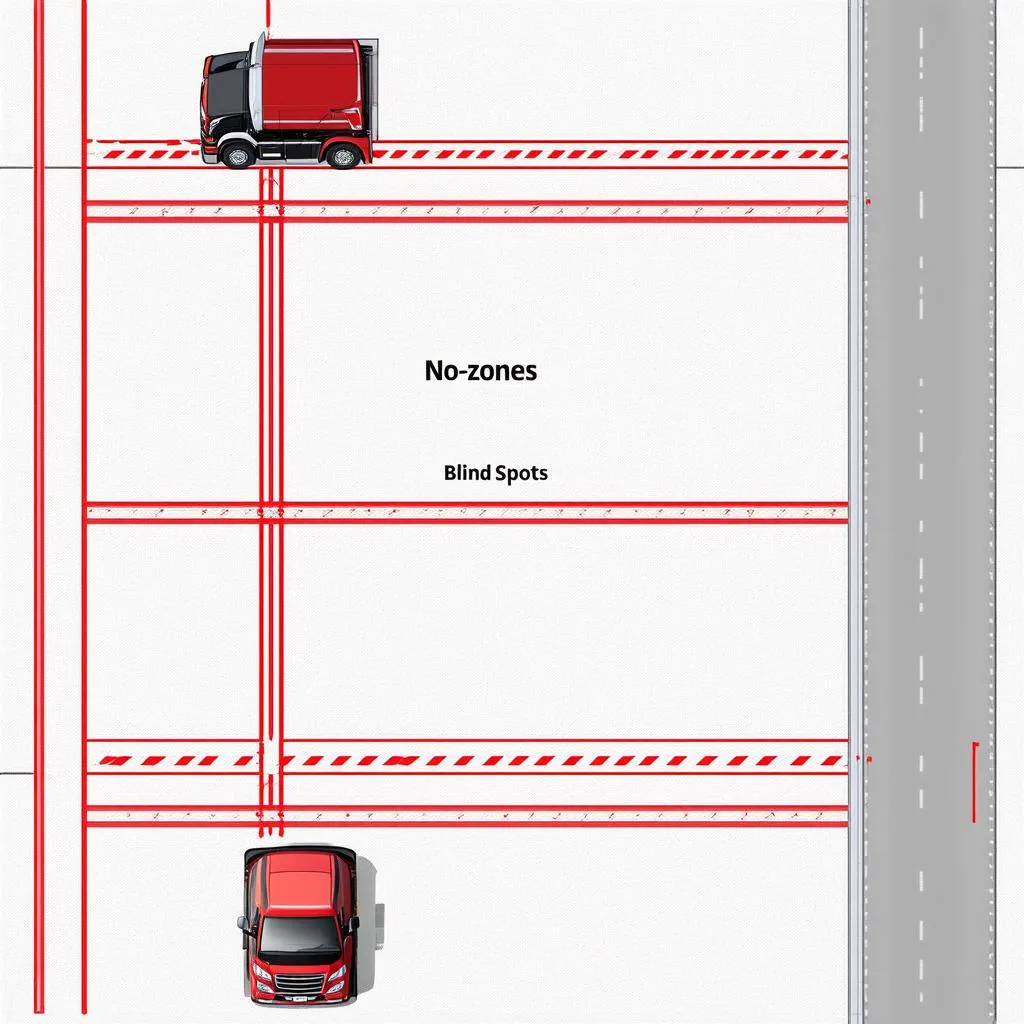We’ve all been there, cruising down the open road, maybe humming along to our favorite road trip playlist, when suddenly a behemoth emerges in front of us: a large truck. While these kings of the road are essential for transporting goods across the country, sharing the road with them requires extra vigilance and a good understanding of safety precautions.
Remember that drive down the iconic Pacific Coast Highway, the sun setting over the Pacific? Beautiful, right? Now, imagine that same drive with a large truck in front of you blocking that breathtaking view. That’s why understanding how to safely navigate around large trucks is crucial for a smooth and enjoyable journey, wherever your destination may be.
Staying Safe: Essential Tips for Sharing the Road with Large Trucks
Visibility is Key: The “No-Zone” Principle
Large trucks have significant blind spots, often called “No-Zones”. These areas are located on the sides, rear, and directly in front of the truck where the driver’s visibility is limited.
Here’s how to stay out of the No-Zone:
- Avoid tailgating: Always maintain a safe following distance. A good rule of thumb is to stay at least 4 seconds behind a truck. To measure this, pick a fixed point ahead and count the seconds it takes for your vehicle to reach that point after the truck has passed it.
- Pass with Purpose: When passing a truck, make sure you can see the entire front of the truck in your rearview mirror before merging back into the lane. Signal your intentions clearly and pass promptly, avoiding lingering in the blind spot.
- Hang Back at Intersections: When approaching an intersection where a truck is making a turn, give them plenty of space. Trucks often need to swing wide to make turns, and being too close can put you in a dangerous position.
Understanding Truck Behavior
- Stopping Distance: Trucks require a much longer distance to stop than cars, especially when carrying heavy loads. Anticipate slowdowns and braking, and be prepared to react accordingly.
- Wind Factor: Large trucks are susceptible to strong winds, which can cause them to sway or drift. Be extra cautious when driving alongside trucks in windy conditions, and be prepared to adjust your speed and position if necessary.
 Truck No-Zone Illustration
Truck No-Zone Illustration
Planning Your Trip: Navigating Truck Traffic
Peak Hours and Routes:
Large trucks are often restricted from using certain roads or highways during peak travel times. Research your route in advance and be aware of any truck restrictions to avoid potential delays. Websites like travelcar.edu.vn can offer valuable insights on route planning and traffic patterns.
Rest Stops and Facilities:
Plan your rest stops strategically. Truck stops typically have larger parking areas and facilities that can accommodate both cars and trucks.
What To Do If…
- You Experience a Breakdown: If possible, pull off the road as far as you can and turn on your hazard lights. Place flares or reflective triangles behind your vehicle to alert other drivers. If you’re unable to move your vehicle, stay inside with your seatbelt fastened and call for roadside assistance.
- You Witness Aggressive Driving: Maintain a safe distance and avoid engaging with aggressive drivers. If you feel threatened, contact the authorities and report the incident.
 Truck on Winding Mountain Road
Truck on Winding Mountain Road
Frequently Asked Questions
What is the safest distance to follow a truck?
Maintaining a following distance of at least 4 seconds is recommended. This provides ample time to react to sudden stops or changes in speed.
Why do trucks sometimes swerve on the highway?
Trucks can be affected by wind gusts, uneven road surfaces, and the weight distribution of their cargo. These factors can cause them to swerve slightly, even when the driver is in control.
How can I make sure a truck driver sees me?
Make eye contact with the driver if possible, use your headlights, especially during dawn and dusk, and avoid lingering in their blind spots.
Travelcar.edu.vn: Your Road Trip Companion
For more tips on safe driving practices and planning your next road adventure, visit travelcar.edu.vn. We offer a wealth of information on various aspects of travel, including route planning, vehicle maintenance, and staying safe on the road.
Remember, a little bit of awareness and preparation goes a long way in ensuring a safe and enjoyable journey for everyone on the road, from the scenic byways of Big Sur to the bustling interstates connecting our nation.